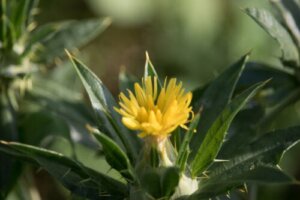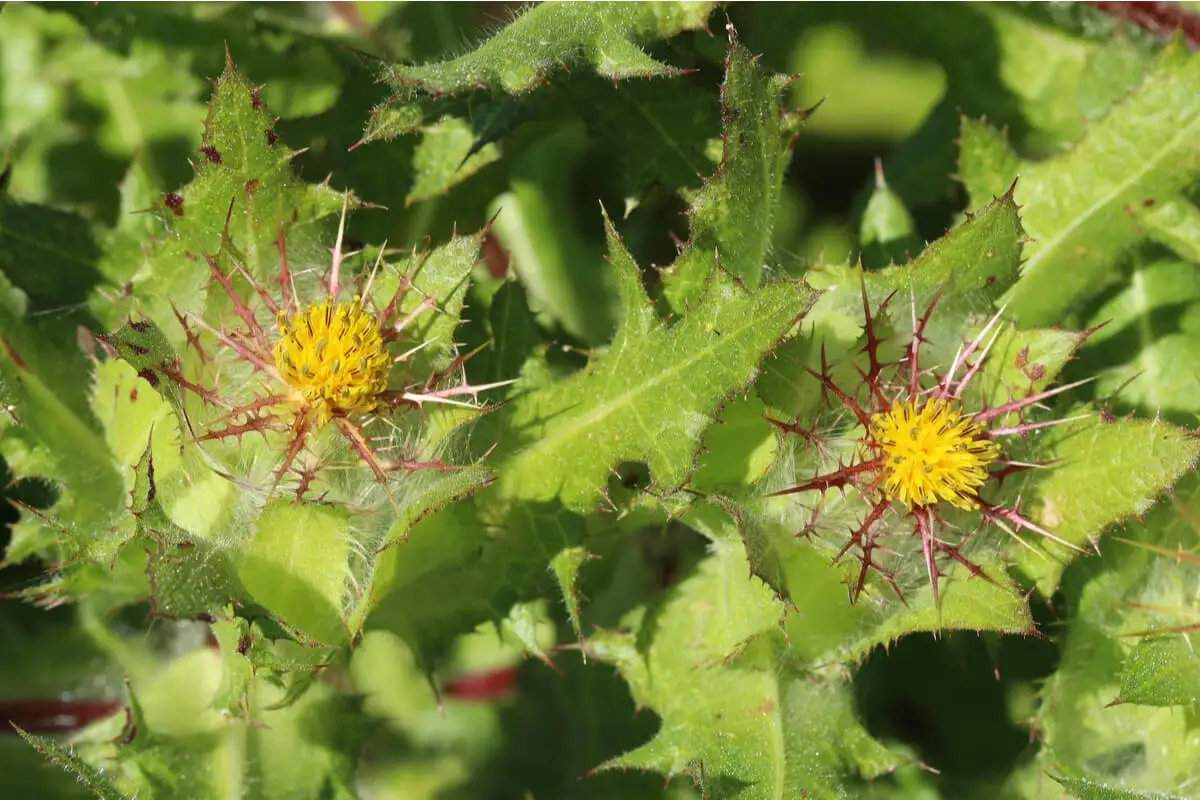St Benedict's Thistle: Properties and Recommendations for Use


Reviewed and approved by the pharmacist Franciele Rohor de Souza
St Benedict’s thistle (Cnicus benedictus), also called blessed thistle, is a phanerogamous plant belonging to the Asteraceae/Compositae family. It originates from the Mediterranean region, although these days it’s distributed in regions of the United States, Australia, and South America.
The plant is characterized by its particular hairy leaves, which resemble dandelions. It also has a branched stem, and yellow, fuzzy flowers that are often used for medicinal purposes. It shouldn’t be confused with milk thistle (Silybum marianum), which is often used as an adjuvant in liver disorders. So, what’s it used for? In the following article, we’ll tell you.
Properties and uses of St Benedict’s thistle
A report in 2016 explained that St Benedict’s thistle contains sesquiterpene lactone glycosides, triterpenoids, lignans, flavonoids, tannins, essential oils, trace elements, and other substances with pharmacological potential. Because of this, antimicrobial, anti-inflammatory, healing, and digestive properties are attributed to it.
Among other things, it has an active compound called cnicin, which, in addition to giving it its bitter taste, acts as an antibiotic, and is hypoglycemic, diuretic, cholagogue, and antitumor. However, there aren’t enough clinical studies to determine the effectiveness of this plant against many of the diseases it’s used in. Therefore, it should be used with caution.
Read more here: Why You Should Take Milk Thistle After Christmas
Breastfeeding
In natural medicine, St Benedict’s thistle is often suggested as a galactagogue, that is, a stimulant of breast milk. According to popular literature, the plant stimulates the production of prolactin or oxytocin, key hormones for lactation. Yet, there are no medical studies that prove this mechanism.
A review shared in The Ochsner Journal discusses the history of St Benedict’s thistle as a possible galactagogue. However, it concludes that more clinical trials are needed to determine if it really works.

Digestion
Due to its cnicin content, this plant could be an adjuvant against digestive difficulties. As explained in a study shared in the Journal of the Serbian Chemical Society, this substance stimulates the production of saliva and gastric acid. Therefore, its consumption could contribute to the digestive process and to the prevention of stomach ailments.
Cough
The tannins, as well as the volatile essential oils of the plant, seem to act as expectorants. For this reason, St Benedict’s thistle is used as an ally to dilute excess phlegm. Regarding this, there’s no scientific data. However, it’s believed that it may be an adjuvant against respiratory infections.
Bacterial infections
The antimicrobial properties of St Benedict’s thistle are used for the prevention and treatment of bacterial infections. Research suggests that it may inhibit the growth of common bacteria, such as Staphylococcus aureus.
Also, a study shared in the Journal of Medicinal Chemistry states that the cnicin contained in the plant slows bacterial growth by blocking the enzymes that enable bacterial replication.
Other possible uses
St Benedict’s thistle (also called “blessed thistle”) traditionally has other applications in alternative medicine. However, for now, there’s no concrete evidence of such effects:
- Diarrhea
- Cancer
- Increased urine flow
- Diabetes
- Arthritis
- Arterial hypertension
Risks and side effects of St Benedict’s thistle
To date, there’s insufficient information on the possible side effects of St Benedict’s thistle. It’s considered safe when used in tea form.
Even so, consumption of more than 6 grams per day may cause stomach pain, nausea, and vomiting. The same happens with its formats in supplements and tinctures.
Due to its composition, it isn’t recommended in the following cases:
- Patients with inflammatory bowel diseases (Crohn’s disease and ulcerative colitis)
- Pregnant women
- Children
- Patients taking diuretics or antacids
- History of allergy to ragweed or related plants

Read more here: Nine Herbs and Spices to Help Purify Your Blood
Recommendations for use and presentations of St Benedict’s thistle
There are no specific guidelines for the correct use of St Benedict’s thistle. Often, supplements come in doses ranging from 300 to 450 milligrams. Doses of more than 5 grams are not exceeded, as it can be irritating to the stomach.
In general, tea is prepared with one to two teaspoons of the dried herb per cup of hot water. Other presentations are tincture, made with an alcohol or vinegar base, and capsules.
What should you keep in mind if you’re going to try it?
The properties of St Benedict’s thistle have not yet been studied in detail. Because of this, remedies derived from the plant are not approved by the Food and Drug Administration (FDA). Caution should be exercised when acquiring these remedies on the market.
Similarly, in cases of underlying diseases or being under medical treatment, it’s best to consult a specialist. It shouldn’t be ignored that plant compounds may have interactions with drugs or cause certain complications.
All cited sources were thoroughly reviewed by our team to ensure their quality, reliability, currency, and validity. The bibliography of this article was considered reliable and of academic or scientific accuracy.
- Al-Snafi, AE (2016). Los componentes y la farmacología de Cnicus Benedictus-A Review.
- Bazzano AN, Hofer R, Thibeau S, Gillispie V, Jacobs M, Theall KP. A Review of Herbal and Pharmaceutical Galactagogues for Breast-Feeding. Ochsner J. 2016;16(4):511-524.
- Tešević, V., Milosavljević, S., Vajs, V., Janaćković, P., Djordjević, I., Jadranin, M., & Vučković, I. (2007). Quantitative analysis of sesquiterpene lactone cnicin in seven Centaurea species wild-growing in Serbia and Montenegro using 1H-NMR spectroscopy. Journal of The Serbian Chemical Society, 72, 1275-1280.
- Szabó, I., Pallag, A., & Blidar, C. (2009). The antimicrobial activity of the Cnicus benedictus L. extracts. Analele Universitatii din Oradea: Fascicula Biologie, 16, 126-128.
- Anke Steinbach, Axel J. Scheidig, and Christian D. Klein (2008). The Unusual Binding Mode of Cnicin to the Antibacterial Target Enzyme MurA Revealed by X-ray Crystallography.
Journal of Medicinal Chemistry, 51 (16), 5143-5147 DOI: 10.1021/jm800609p -
Ulbricht, C., Basch, E., Dacey, C., Dith, S., Hammerness, P., Hashmi, S., Seamon, E., Vora, M., & Weissner, W. (2008). An Evidence-Based Systematic Review of Blessed Thistle (Cnicus benedictus) by the Natural Standard Research Collaboration. Journal Of Dietary Supplements, 5(4), 422–437. https://doi.org/10.1080/19390210802519754
This text is provided for informational purposes only and does not replace consultation with a professional. If in doubt, consult your specialist.








